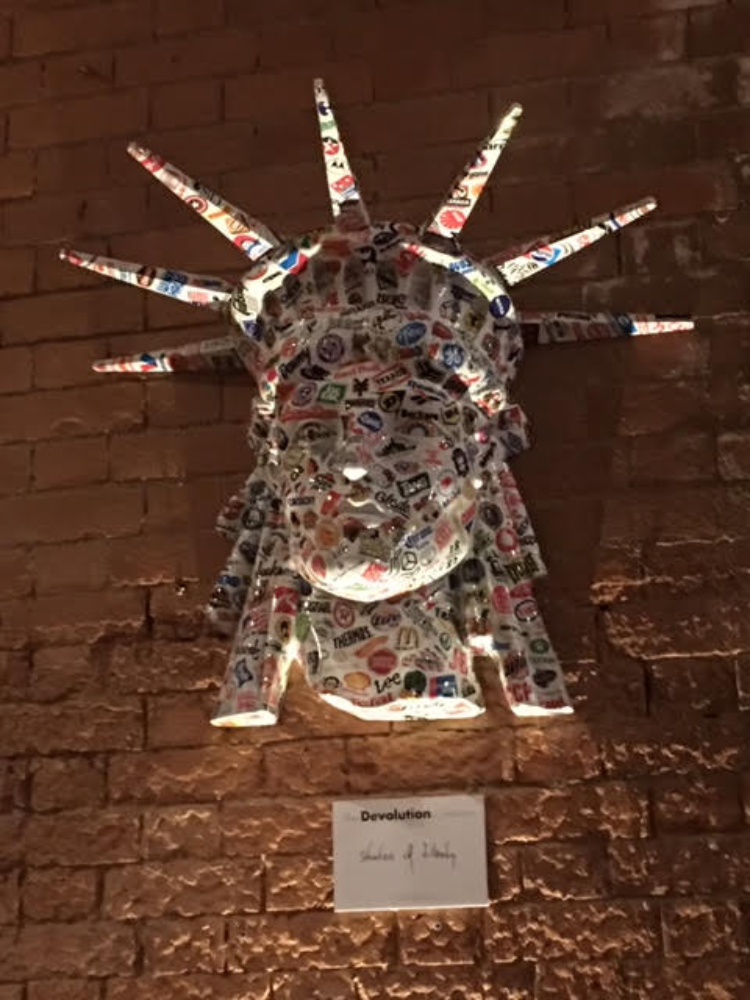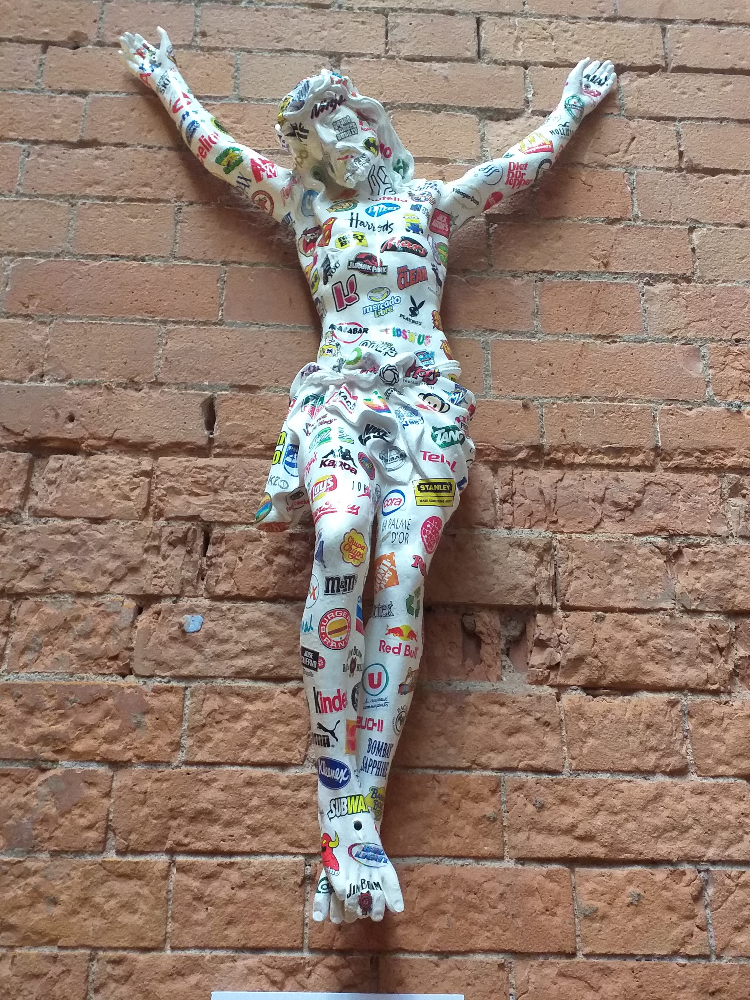Exhibition Review | Devolution @ The Market Bar
Anyone who’s seen Planet of the Apes will remember the climactic scene at the end of the film where George Taylor discovers the ruins of the Statue of Liberty, promptly realising that the dystopian Ape-ruled planet he’s on is in fact Earth. A similar feeling overcame me when visiting A.B Entopan’s current exhibition in the Market Bar, entitled Devolution. Dealing with the theme, ‘icons of civilisation’, Entopan’s current work takes the form of plastic-cast cultural icons—the Crucifixion of Christ, an Egyptian mask, a cherub, and the Statue of Liberty (to name a few). Hundreds of corporate logos neatly deface the surfaces of these icons, in an irony that is confrontational and arresting, immediate and casual.

Crisply white and garishly tacky, these sculptures line the walls of the Market Bar, looking incongruous against the red brick and warm lighting of the room. They are unapologetic in their appearance, staring boldly back at the viewer with a sort of dispassionate hostility. Despite their vibrancy and cool modernity, there’s something hideous about their plasticky sheen. They unabashedly remind the viewer of the consumerism that is central to our society; that is embedded in the desires of humankind. As I stare up at them, I envision them discarded, like an empty coke bottle or sweet wrapper, sinking into the ground over hundreds of years, always remaining separate from it. They feel hard to justify, hard to reconcile – a sort of amalgamation of the tawdry products of capitalism that are consumed, and ultimately cast aside as rubbish.
However, while inextricably linked to our society and culture, there’s something otherworldly about them too. They appear as relics from a future; something holy that was once worshipped, disconnected from belief through time, now just strange and incomprehensible. In conversation with the artist, he described them as an embodiment of who we are as a civilisation. If an alien were to visit, as the cliche goes, they could unearth these artworks and infer everything about humans as a species; our culture, our beliefs, our raison d’etre. And here is where the comparison to Planet of the Apes arises—staring into the blank eyes of the Statue of Liberty, followed by the startled realisation that this is Earth.

Culture has always been appropriated by corporations, in both direct and indirect ways, so what Entopan is presenting visually is not necessarily shocking. A plastic Jesus vandalised with corporate logos invariably intends to offend, but it doesn’t. These types of images are almost blasé in a society where you can purchase a dash-board Jesus that will hula dance when you go over speed bumps. The most shocking thing about the artworks on display is how unshocking they are. What unnerved me ultimately about these sculptures is not their appearance or what they represent. Rather it’s how plausible or inevitable they seem. If an alien were to land in Egypt, would they unearth the mask of Tutankhamun, or would they unearth Entopan’s ersatz mask? The exhibition presents a conflicting binary of human culture, and the viewer is left to resolve it.

Through the global language of iconography, Entopan tries to communicate a universal statement to the viewer. This is not a political or philosophical statement. It is merely a statement of fact. Entopan confronts the viewer with who they are, and it is up to us to decide what that means. The message is fairly obvious, and immediately apparent, which removes the satisfaction of meditating over an artwork and puzzling out meaning. Nevertheless, their simplicity makes them accessible to any visitor. The message, while easily graspable, impresses on the viewer a reality that is far less easy to grasp.
Devolution is the first instalment in a triptych, and will be on show at the Market Bar until 15th of July. Don’t worry If you miss it; you might catch it a hundred years from now, in a museum on Mars.
